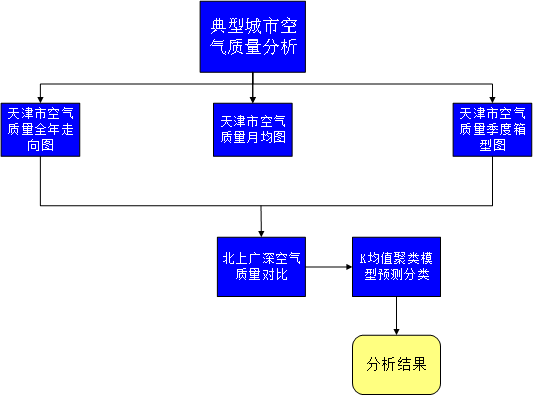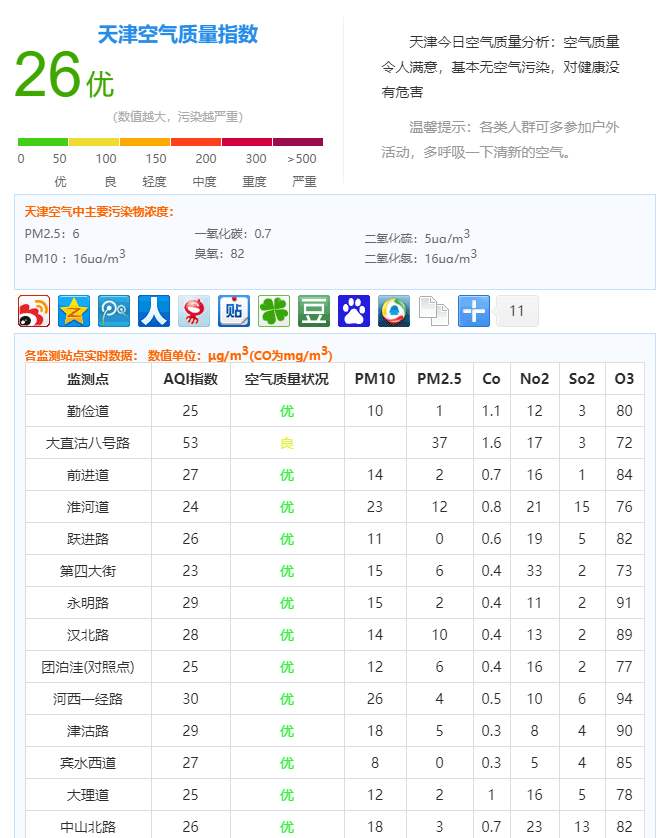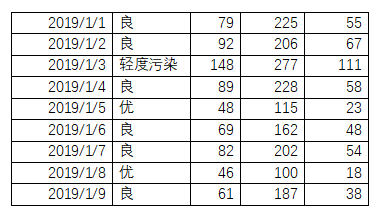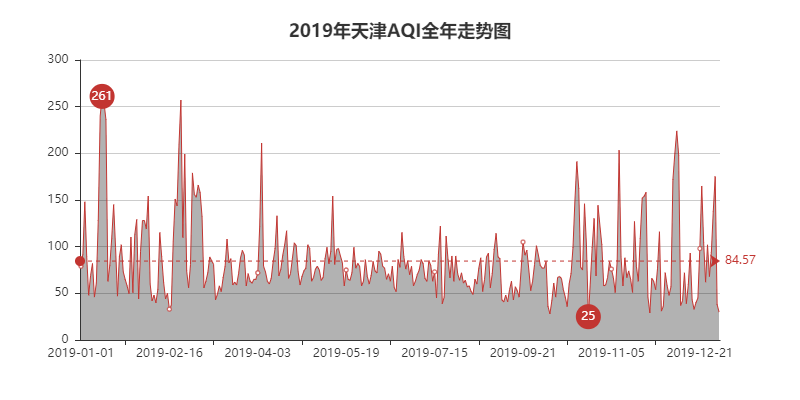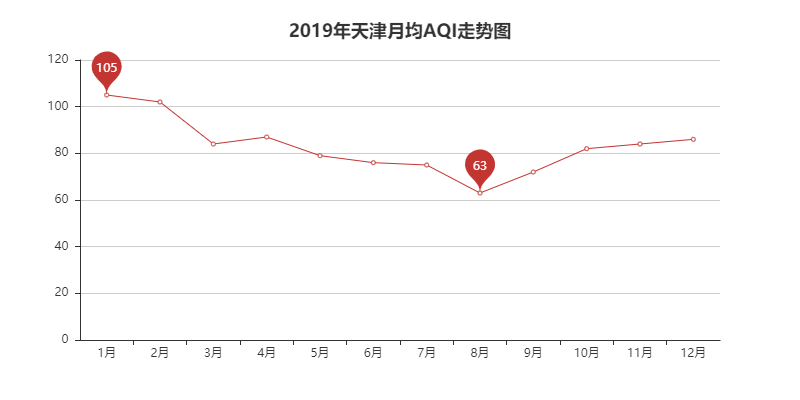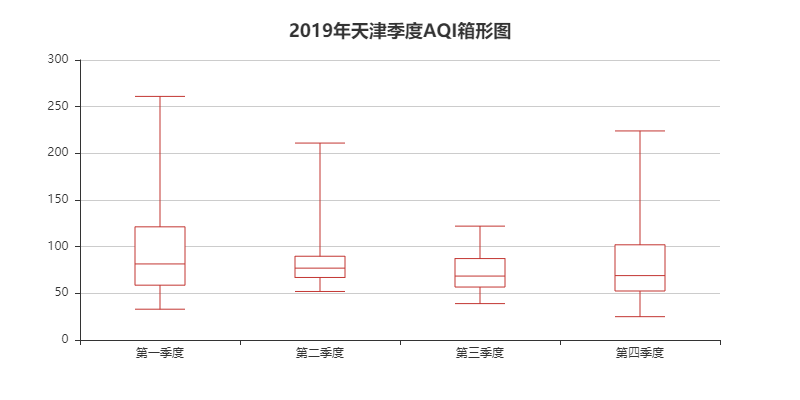干货!如何用 Python+KNN 算法实现城市空气质量分析与预测?
云栖号资讯:【点击查看更多行业资讯】
在这里您可以找到不同行业的第一手的上云资讯,还在等什么,快来!
随着中国工业和科技的发展,中国的一些发达城市的空气质量问题变得越来越严重,其中最为严重的便是PM2.5带来的恶劣环境问题。
本文在根据网络公开空气质量数据的基础上进行爬取相关数据,主要针对环境较为恶劣的城市,天津、北京、广州等几个城市,尤其是针对天津的质量数据进行对比分析。在分析的基础上得出空气质量变化情况,提出一些意见。并借助机器学习算法根据数据预测空气质量,以达到分析预测的典型大数据分析模式效果。
整体分析的流程图如下:
实验前的准备
1.1 数据获取
我们这里所得到的数据来源于网络公开的空气质量数据,数据来源于“天气后报”网站,网址为:http://www.tianqihoubao.com/aqi/tianjin.html。网址内容如下图可见:
图1-1 网址数据图
整个数据的获取使用python进行爬取。流程如下:
(1) 导入爬虫所需要的的库:
在air_tianjin_2019.py程序中。
其中Requests 是用Python语言编写,基于urllib,采用 Apache2 Licensed开源协议的 HTTP 库。它比 urllib 更加方便,可以节约我们大量的工作,完全满足 HTTP 测试需求。
其中BeautifulSoup库是一个灵活又方便的网页解析库,处理高效,支持多种解析器。利用它就不用编写正则表达式也能方便的实现网页信息的抓取
对应代码如下:
(2)为了防止网站的反爬机制,我们设定模拟浏览器进行访问获取数据:
headers = { 'User-Agent':'Mozilla/5.0 (Windows NT 6.1; WOW64) AppleWebKit/537.36 (KHTML, like Gecko) Chrome/63.0.3239.132 Safari/537.36'}
(3)然后获取2019年全年的空气质量数据:
1.2 数据预处理
如果仅仅是从网站上得到的数据会有一些标签等干扰项,我们针对一些标签进行去除即可:
for j in tr[1:]:
td = j.find_all('td')
Date = td[0].get_text().strip()
Quality_grade = td[1].get_text().strip()
AQI = td[2].get_text().strip()
AQI_rank = td[3].get_text().strip()
PM = td[4].get_text()
with open('air_tianjin_2019.csv', 'a+', encoding='utf-8-sig') as f:
f.write(Date + ',' + Quality_grade + ',' + AQI + ',' + AQI_rank + ',' + PM + '\n')最终爬取下来的部分数据如下:
表1-1 部分天津爬取数据表
这几个数据分别对应着AQI指数、当天AQI排名和PM2.5值
数据分析
这里的数据分析主要通过可视化的方法得到图像来进行分析。
(1) 天津AQI全年走势图
代码在air_tianjin_2019_AQI.py中
通过导入pyecharts 库来进行绘制走势图
首先通过已经获取到的数据进行读取:
df = pd.read_csv('air_tianjin_2019.csv', header=None, names=["Date", "Quality_grade", "AQI", "AQI_rank", "PM"])
然后获取日期和AQI数据,储存在列表变量中,以方便绘制图像:
attr = df['Date']v1 = df['AQI']
接着定义标题,绘制曲线并保存为网页即可:
line = Line("2019年天津AQI全年走势图", title_pos='center', title_top='18', width=800, height=400)
line.add("", attr, v1, mark_line=['average'], is_fill=True, area_color="#000", area_opacity=0.3, mark_point=["max", "min"], mark_point_symbol="circle", mark_point_symbolsize=25)
line.render("2019年天津AQI全年走势图.html")
最终的效果图如下可见
图2-2 2019年天津AQI全年走势图
根据图2-2可知,在2019年度,天津的空气质量峰值分别是在1月、2月、11月和12月,即主要集中在春冬季,考虑到可能是春冬季通风较差,且节日较多,过多的节日烟花和汽车人员流动造成了空气质量变差。
(2)天津月均AQI走势图
air_tianjin_2019_AQI_month.py
为了体现出每月的平均空气质量变化,我们绘制了月均走势图。
首先同样的是读取数据:
df = pd.read_csv('air_tianjin_2019.csv', header=None, names=["Date", "Quality_grade", "AQI", "AQI_rank", "PM"])
接着获取日期和空气质量数据,并加以处理,去除日期中间的“-”:
dom = df[['Date', 'AQI']]
list1 = []
for j in dom['Date']:
time = j.split('-')[1]
list1.append(time)df['month'] = list1
接着计算每月空气质量的平均值
month_message = df.groupby(['month'])
month_com = month_message['AQI'].agg(['mean'])
month_com.reset_index(inplace=True)
month_com_last = month_com.sort_index()
attr = ["{}".format(str(i) + '月') for i in range(1, 13)]
v1 = np.array(month_com_last['mean'])
v1 = ["{}".format(int(i)) for i in v1]
然后绘制走势图:
line = Line("2019年天津月均AQI走势图", title_pos='center', title_top='18', width=800, height=400)
line.add("", attr, v1, mark_point=["max", "min"])
line.render("2019年天津月均AQI走势图.html")
最终的效果图如下可见:
图2-3 2019年天津月均AQI走势图
(3)天津季度AQI箱形图
代码在air_tianjin_2019_AQI_season.py中
绘制天津季度空气质量箱型图,步骤如下:
读取爬取下来的数据:
df = pd.read_csv('air_tianjin_2019.csv', header=None, names=["Date", "Quality_grade", "AQI", "AQI_rank", "PM"])
接着按照月份分季,可以分为四个季度:
dom = df[['Date', 'AQI']]
data = [[], [], [], []]
dom1, dom2, dom3, dom4 = data
for i, j in zip(dom['Date'], dom['AQI']):
time = i.split('-')[1]
if time in ['01', '02', '03']:
dom1.append(j)elif time in ['04', '05', '06']:
dom2.append(j)elif time in ['07', '08', '09']:
dom3.append(j)else:
dom4.append(j)然后定义箱型图的标题,横纵坐标等绘制箱型图:
boxplot = Boxplot("2019年天津季度AQI箱形图", title_pos='center', title_top='18', width=800, height=400)
x_axis = ['第一季度', '第二季度', '第三季度', '第四季度']
y_axis = [dom1, dom2, dom3, dom4]
_yaxis = boxplot.prepare_data(y_axis)
boxplot.add("", x_axis, _yaxis)
boxplot.render("2019年天津季度AQI箱形图.html")
最终得到绘制的箱型图如下可见:
图2-4 2019年天津季度AQI箱形图
KNN算法预测
整体的代码流程分为两个部分,一部分是建立test.py程序用来将CSV文件转为符合标准的TXT数据存储;另一部分是K均值聚类的数据分类。
(1) 数据生成TXT
代码在test.py中
首先读入数据,存出入列表为x何y。同时因为y的值为汉字,需要转换为数字:
文件的名字
FILENAME1 = "air_tianjin_2019.csv"
禁用科学计数法
pd.set_option('float_format', lambda x: '%.3f' % x)
np.set_printoptions(threshold=np.inf)
读取数据
data = pd.read_csv(FILENAME1)
rows, clos = data.shape
DataFrame转化为array
DataArray = data.values
Y=[]
y = DataArray[:, 1]
for i in y:
if i=="良":
Y.append(0)
if i=="轻度污染":
Y.append(1)
if i=="优":
Y.append(2)
if i=="严重污染":
Y.append(3)
if i=="重度污染":
Y.append(4)print(Y)
print(len(y))
X = DataArray[:, 2:5]
print(X[1])
然后将存储的数据写入TXT,其中要注意换行和加“,”:
for i in range(len(Y)):
f=open("data.txt","a+")
for j in range(3):
f.write(str(X[i][j])+",")f.write(str(Y[i])+"n")
print("data.txt数据生成")
(2)K均值聚类
代码在KNearestNeighbor.py中。
首先是读取数据:
def loadDataset(self,filename, split, trainingSet, testSet): # 加载数据集 split以某个值为界限分类train和test
with open(filename, 'r') as csvfile:
lines = csv.reader(csvfile) #读取所有的行
dataset = list(lines) #转化成列表
for x in range(len(dataset)-1):
for y in range(3):
dataset[x][y] = float(dataset[x][y])
if random.random() < split: # 将所有数据加载到train和test中
trainingSet.append(dataset[x])
else:
testSet.append(dataset[x])定义计算距离的函数
def calculateDistance(self,testdata, traindata, length): # 计算距离
distance = 0 # length表示维度 数据共有几维
for x in range(length):
distance += pow((int(testdata[x])-traindata[x]), 2)
return math.sqrt(distance)对每个数据文档测量其到每个质心的距离,并把它归到最近的质心的类。
def getNeighbors(self,trainingSet, testInstance, k): # 返回最近的k个边距
distances = []
length = len(testInstance)-1
for x in range(len(trainingSet)): #对训练集的每一个数计算其到测试集的实际距离
dist = self.calculateDistance(testInstance, trainingSet[x], length)
print('训练集:{}-距离:{}'.format(trainingSet[x], dist))
distances.append((trainingSet[x], dist))
distances.sort(key=operator.itemgetter(1)) # 把距离从小到大排列
print(distances)
neighbors = []
for x in range(k): #排序完成后取前k个距离
neighbors.append(distances[x][0])
print(neighbors)
return neighbors决策函数,根据少数服从多数,决定归类到哪一类:
def getResponse(self,neighbors): # 根据少数服从多数,决定归类到哪一类
classVotes = {}
for x in range(len(neighbors)):
response = neighbors[x][-1] # 统计每一个分类的多少
if response in classVotes:
classVotes[response] += 1
else:
classVotes[response] = 1
print(classVotes.items())
sortedVotes = sorted(classVotes.items(), key=operator.itemgetter(1), reverse=True) #reverse按降序的方式排列
return sortedVotes[0][0]计算模型准确度
def getAccuracy(self,testSet, predictions): # 准确率计算
correct = 0
for x in range(len(testSet)):
if testSet[x][-1] == predictions[x]: #predictions是预测的和testset实际的比对
correct += 1
print('共有{}个预测正确,共有{}个测试数据'.format(correct,len(testSet)))
return (correct/float(len(testSet)))*100.0接着整个模型的训练,种子数定义等等:
def Run(self):
trainingSet = []
testSet = []
split = 0.75
self.loadDataset(r'data.txt', split, trainingSet, testSet) #数据划分
print('Train set: ' + str(len(trainingSet)))
print('Test set: ' + str(len(testSet)))
#generate predictions
predictions = []
k = 5 # 取最近的5个数据
# correct = []
for x in range(len(testSet)): # 对所有的测试集进行测试
neighbors = self.getNeighbors(trainingSet, testSet[x], k) #找到5个最近的邻居
result = self.getResponse(neighbors) # 找这5个邻居归类到哪一类
predictions.append(result)
# print('predictions: ' + repr(predictions))
# print('>predicted=' + repr(result) + ', actual=' + repr(testSet[x][-1]))
# print(correct)
accuracy = self.getAccuracy(testSet,predictions)
print('Accuracy: ' + repr(accuracy) + '%')最终模型的准确度为90%。
图2-10 模型运行结果图
源码地址:https://pan.baidu.com/s/1Vcc_bHQMHmQpe-F6A-mFdQ
【云栖号在线课堂】每天都有产品技术专家分享!
课程地址:https://yqh.aliyun.com/live立即加入社群,与专家面对面,及时了解课程最新动态!
【云栖号在线课堂 社群】https://c.tb.cn/F3.Z8gvnK
原文发布时间:2020-07-06
本文作者: 李秋键
本文来自:“csdn”,了解相关信息可以关注“csdn”
